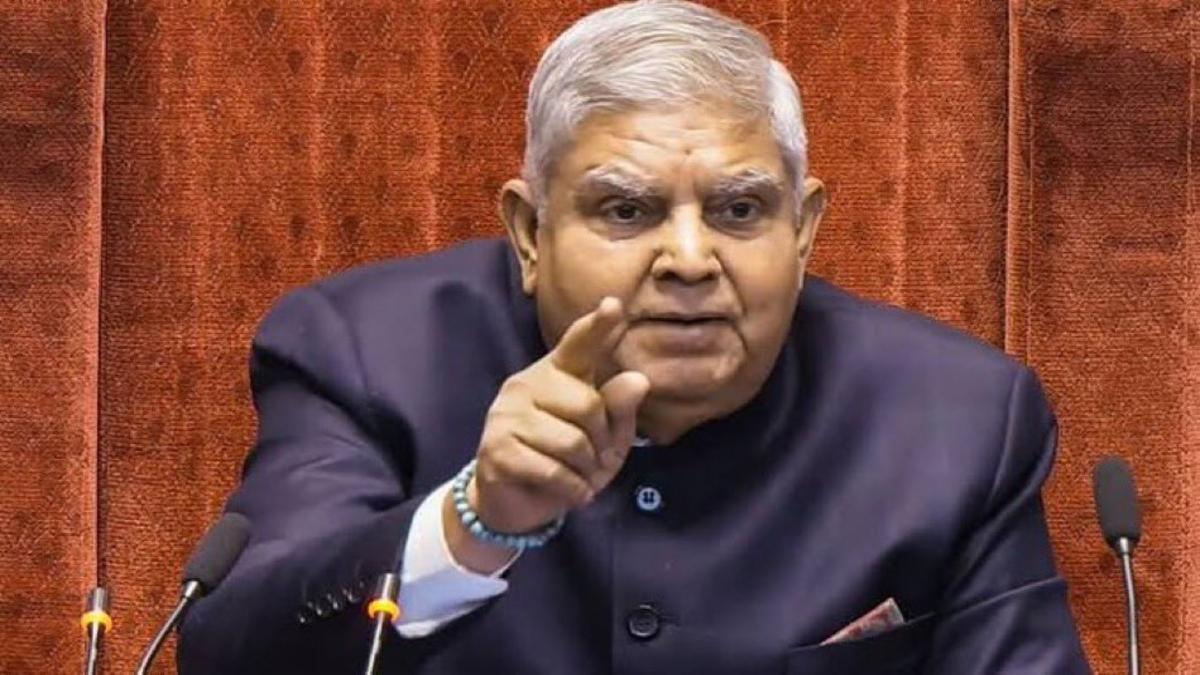Article Body
Breaking News: Jagdeep Dhankhar’s Abrupt Exit Triggers Search for New Vice President
A Sudden Resignation That Shook Lutyens Delhi
On the muggy evening of July 21, 2025, the power corridors of India’s capital bristled with uncertainty. Jagdeep Dhankhar, the 74-year-old Vice President of India—just months into the third year of his five-year term—submitted his resignation letter to President Droupadi Murmu. In a nation accustomed to political churn, his exit still sent a rare jolt, the reverberations felt across both Houses of Parliament and political camps of all hues.
“To prioritise health care and abide by medical advice, I hereby resign as the Vice President of India, effective immediately, in accordance with Article 67(a) of the constitution,” wrote Dhankhar in his letter, thanking both President Murmu and Prime Minister Modi for their support during his tenure.
What made the resignation particularly dramatic was its timing: the very first day of the Monsoon Session and in the midst of an escalating row over judicial accountability. The Vice President, ex-officio Chairman of the Rajya Sabha, had earlier in the day acted on a rare motion against a sitting High Court judge, sparking a blizzard of behind-the-scenes political meetings and drawing the government’s focus to a constitutional emergency.
Election Commission Moves Swiftly
Within 48 hours, the Election Commission of India (ECI) stated it had initiated preparatory work for the Vice Presidential election. As per constitutional mandate, a formal election must be held within 60 days to ensure constitutional continuity.
In its statement, the ECI said, "On completion of preparatory activities, the announcement of the election schedule to the office of the Vice President of India will follow as soon as possible".
Fast Facts: The Vice Presidential Election Process
-
Only Members of Parliament (Lok Sabha and Rajya Sabha, including nominated members) vote—state legislatures do not participate.
-
Current effective strength eligible to vote: 786 Members of Parliament, after accounting for vacant seats.
-
Majority required to win: 394 votes, assuming full turnout.
-
NDA support base: About 422 MPs (293 in Lok Sabha, 129 in Rajya Sabha), an apparent comfortable buffer over the required simple majority.
-
Opposition (INDIA bloc) faces numbers deficit and internal friction, though determined to contest.
Who Will Step Into the Void?
Prominent names doing the rounds for the NDA’s nominee include Harivansh Singh, the current Deputy Chairman of the Rajya Sabha and a trusted government ally. The Opposition, meanwhile, is expected to nominate a candidate as a symbolic contest—if not, in reality, a numerical one.
Senior BJP strategist:
“We are still processing it. But I believe the party will choose someone who is a solid choice and is non-controversial”.
Why Did Dhankhar Resign—And What’s Next?
Although the resignation was attributed to health reasons, many political leaders and commentators called for more transparency given its suddenness. Just twelve days earlier, Dhankhar had publicly declared he would retire in August 2027 “subject to divine intervention.” Congress leader Jairam Ramesh said, “Something very serious must have transpired between 1pm and 4:30pm… It caught the entire political establishment off guard,” alluding to possible institutional pressure or political discord.
While speculation swirls outside the formal record, sources from the government confirm that Dhankhar’s decision followed a high-level meeting attended by top ministers, and that Prime Minister Modi was briefed immediately after the critical parliamentary developments.
Key Events Timeline
| Date | Event |
|---|---|
| July 21, 2025 | Jagdeep Dhankhar submits resignation to President Murmu |
| July 21, 2025 | Monsoon Session begins, dramatic Rajya Sabha developments |
| July 22, 2025 | Home Ministry notifies resignation in Official Gazette |
| July 23, 2025 | Election Commission begins selection process |
| Next 60 Days | VP election to be held; candidates to be announced |
The Numbers Game: NDA’s Clear Edge
Here’s how the arithmetic stands:
-
Lok Sabha: NDA – 293 MPs out of 542 (one vacancy); Opposition/others – 249.
-
Rajya Sabha: NDA – 129 MPs out of 240 effective strength (after 5 vacancies); Opposition/others – 111.
-
Total NDA backing: 422 (well above the majority mark of 394).
Even if some abstentions or surprises emerge, the NDA’s candidate starts with a clear, almost insurmountable advantage for the high office.
Parliament Reacts: Voices From Across the Aisle
While the Bharatiya Janata Party and allies have maintained an official line emphasizing respect for Dhankhar’s decision and a focus on the coming election, opposition parties have been vocal about “transparency” and the need for “clean constitutional processes.” Leaders like Sharad Pawar and Sanjay Raut reportedly sought meetings with Dhankhar after his resignation, but none were granted before his departure.
Meanwhile, Dhankhar’s swift packing—and the sight of moving vans at the newly built Vice President Enclave—left a lasting image for political observers, further fueling the intrigue.
Looking Ahead: Countdown to a Crucial Poll
The next Vice President is due to be elected before September 19, 2025, with both the NDA and Opposition expected to announce nominees soon. While the outcome may appear a foregone conclusion, both sides may use the contest to unify and send messages to MPs and voters ahead of key state elections next year.
As constitutional authorities work at breakneck pace to ensure stability, many in Lutyens Delhi are left asking: what really prompted such a sudden departure, and how will it shape majoritarian politics in the country’s most hallowed halls?
“It has been a privilege and satisfaction to witness and partake in India’s remarkable economic progress… Serving in this transformative era of our nation’s history has been a true honor.”
— Jagdeep Dhankhar, resignation letter
For verified updates on the Vice Presidential election, visit the Election Commission of India and Wikipedia: Vice President of India.

Comments